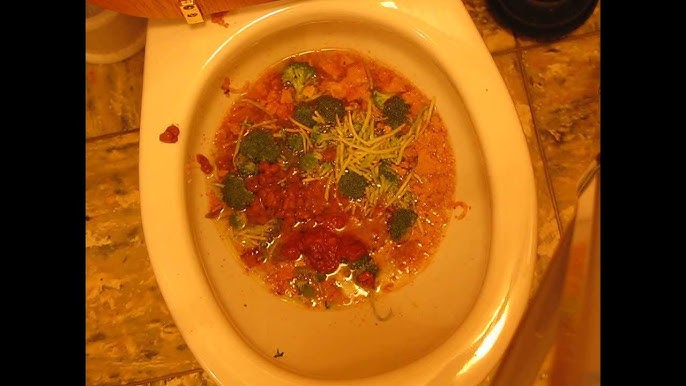The content on the next paragraphs involving Is it safe to flush food (especially rice) down the toilet? is exceptionally entertaining. You should look it over.

Intro
Lots of people are often faced with the issue of what to do with food waste, especially when it concerns leftovers or scraps. One common question that arises is whether it's okay to flush food down the toilet. In this article, we'll look into the reasons that individuals might take into consideration flushing food, the effects of doing so, and alternate methods for appropriate disposal.
Reasons that people may think about purging food
Absence of awareness
Some individuals may not be aware of the potential harm triggered by flushing food down the toilet. They might incorrectly believe that it's a safe method.
Ease
Purging food down the toilet might seem like a fast and easy solution to throwing away undesirable scraps, especially when there's no neighboring trash can offered.
Idleness
In many cases, people might merely select to flush food out of large negligence, without considering the effects of their actions.
Repercussions of flushing food down the bathroom
Ecological impact
Food waste that winds up in rivers can add to pollution and damage marine environments. In addition, the water used to flush food can stress water sources.
Plumbing problems
Purging food can lead to blocked pipes and drains pipes, triggering expensive plumbing fixings and inconveniences.
Types of food that should not be flushed
Coarse foods
Foods with fibrous appearances such as celery or corn husks can obtain tangled in pipes and trigger obstructions.
Starchy foods
Starchy foods like pasta and rice can absorb water and swell, bring about blockages in pipes.
Oils and fats
Greasy foods like bacon or cooking oils ought to never be flushed down the bathroom as they can strengthen and cause obstructions.
Proper disposal techniques for food waste
Making use of a garbage disposal
For homes outfitted with waste disposal unit, food scraps can be ground up and flushed via the pipes system. Nonetheless, not all foods appropriate for disposal in this manner.
Recycling
Certain food packaging products can be reused, reducing waste and reducing ecological influence.
Composting
Composting is an environment-friendly method to take care of food waste. Organic products can be composted and utilized to enrich soil for horticulture.
The relevance of appropriate waste monitoring
Lowering environmental injury
Correct waste administration practices, such as composting and recycling, assistance decrease contamination and maintain natural deposits for future generations.
Safeguarding plumbing systems
By preventing the technique of flushing food down the commode, home owners can protect against expensive pipes repair work and preserve the honesty of their plumbing systems.
Final thought
Finally, while it may be appealing to purge food down the bathroom for comfort, it's important to understand the potential consequences of this activity. By taking on appropriate waste administration methods and throwing away food waste properly, people can add to healthier plumbing systems and a cleaner atmosphere for all.
FLUSH FOOD DOWN THE TOILET?
FLUSHING FOOD CAN CAUSE BLOCKED DRAINS IN YOUR HOME
All of the plumbing fixtures in your home are connected to the same sewer pipe outside of your home. This outdoor sewer pipe is responsible for transporting all the wastewater from your home to the Council sewer mains. Even small pieces of food that go down the kitchen sink can cause problems for your sewer. It should therefore be obvious that flushing larger bits of food, such as meat, risks a clog in either the toilet itself or the sewer pipes. Flushing greasy food is even more problematic because oil coagulates when it cools, coating the interior lining of your pipes.
THE TOILET IS NOT A BIN
Food isn’t the only thing that people shouldn’t be flushing down the toilet. People use the toilet to dispose of all kinds of things such as tampons, makeup wipes, dental floss, kitty litter and even underwear. Water goes to great lengths to educate residents about the high costs and stress placed on wastewater treatment systems simply from people flushing the wrong stuff down the toilet. It costs taxpayers millions of dollars each year, and homeowners thousands in blocked drain repairs.
FLUSHING FOOD IS A WASTE OF WATER
Flushing food is a waste of our most precious resource - water. In June this year Level 1 water restrictions were introduced to protect water supply from drought conditions. Much of New South Wales continues to be affected by prolonged drought with recent figures revealing up to 97 per cent of the state remains in drought. Depending on whether you have a single or dual flush toilet, every single flush uses between five and 11 litres of water. In the current climate this is a huge amount of water to be wasting on flushing food that should be placed in the bin (or better yet, the compost).
https://www.jabplumbingsolutions.com.au/blog/can-you-flush-food-down-the-toilet

I hope you enjoyed reading our excerpt about Flushing Food Down the Toilet?. Thanks so much for taking the time to browse our content. Do you know about anybody else who is fascinated with the topic? Feel free to share it. I cherish reading our article about .
Go Deal Now